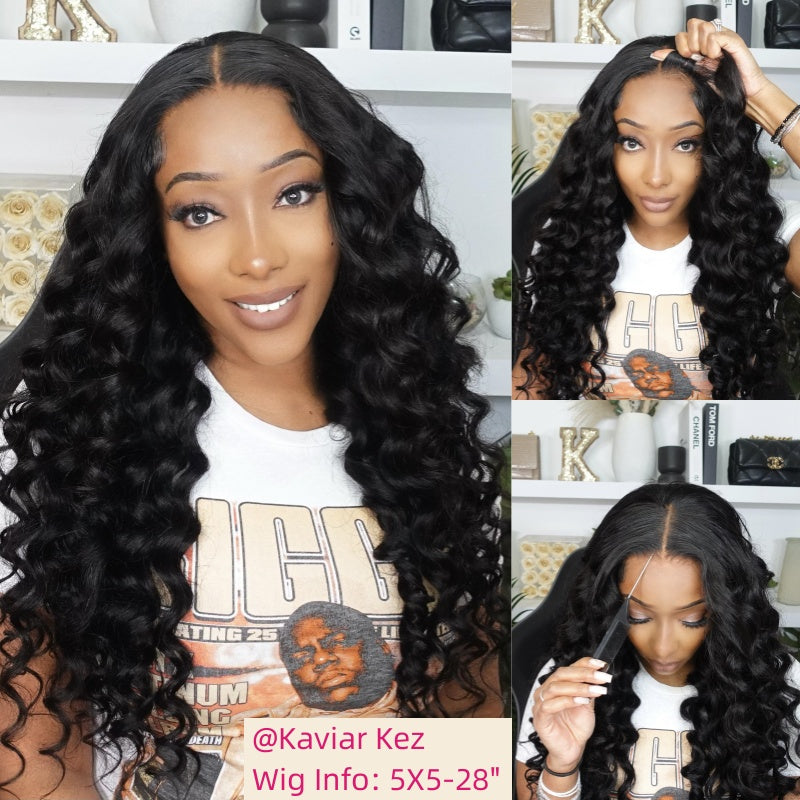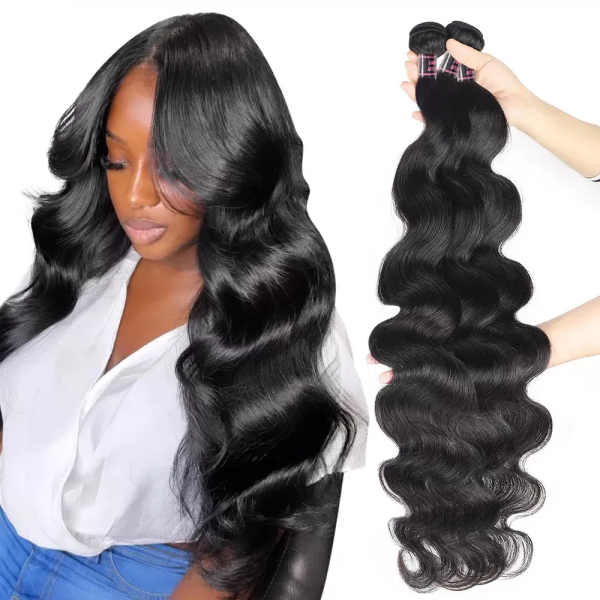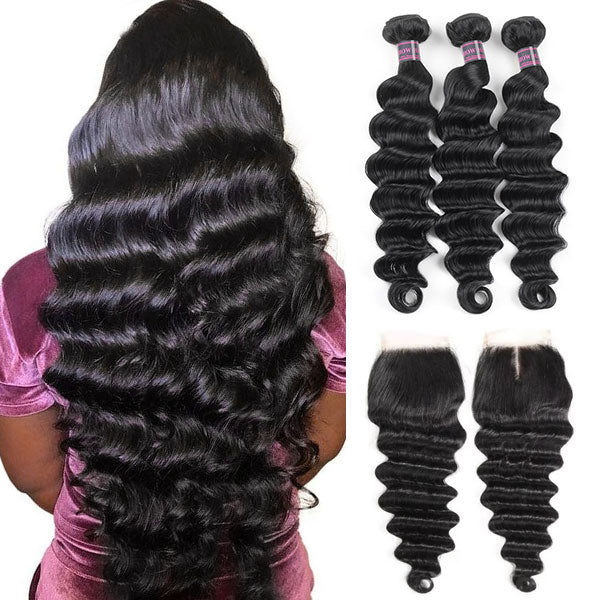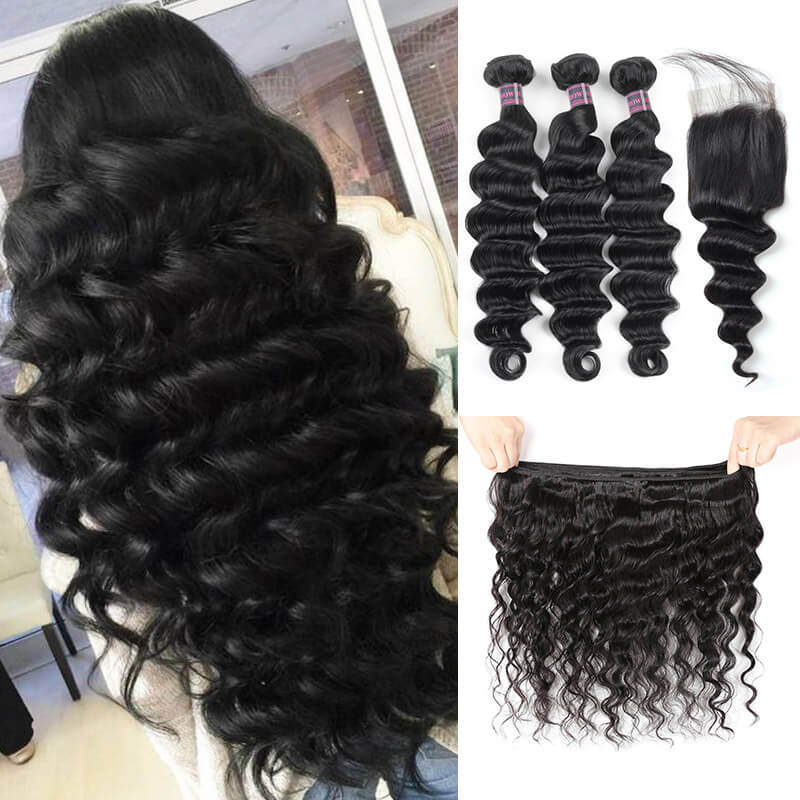How Do I Make My Lace Front Wig Look Natural?
Lace front wigs are popular among black women for their ability to create a beautiful and natural-looking hairline. But knowing how to make them look as natural as possible is key. The aim of this article is to guide you through the essential steps to ensure your wig blends well with your natural hairline. From selecting the right wig to applying it correctly, and styling it to maintain its appearance, we'll cover everything you need to know to make your lace front wig look natural every time you wear it.
Understanding Lace Front Wigs
Lace front wigs are named for the sheer lace that makes up the wig's hairline. This lace is designed to mimic the look of your natural scalp, offering a seamless transition from wig to skin. For black women, these wigs are particularly valuable as they offer a wide range of styling options while also protecting natural hair from daily wear and tear.
The lace at the front of these wigs can be made from various materials such as Swiss or French lace, with Swiss being finer and more delicate. It's this fine material that lays flat against your forehead, creating the illusion that the wig hairs grow directly from your own scalp.
One major advantage of lace front wigs is their breathability. The lace allows your scalp to breathe, which is essential for comfort, especially in warmer climates or during physical activities. Additionally, because only the front portion of the wig is lace, the rest of the wig cap can be constructed with stronger materials that provide structure and support to the hairstyle.
For black women, these wigs can accommodate a variety of textures that match natural hair types, from silky straight to deep curls and coils. Lace front wigs can come pre-styled, but many prefer to style them to their liking, giving them the freedom to switch up their looks without manipulating their natural hair.
Another benefit is the protective aspect. Wearing a lace front wig can shield your natural hair from harsh environmental factors and styling practices that lead to damage over time, like heat styling, coloring, or chemical treatments.
Now that you're familiar with what lace front wigs are and their benefits let's move on to how you can select the right one for you.

How to Choose the Right Lace Front Wig
When it's time to pick out a lace front wig, there are several factors you should consider to ensure it looks as natural as possible:
- Lace Color: The lace itself comes in various shades to match different skin tones. You want to choose a color that closely matches your scalp for the most natural look. If you can't find an exact match, remember that lighter laces can often be tinted with makeup or dye.
- Hair Texture: Select a texture that resembles your natural hair or the style you're aiming for. Whether it's yaki, kinky, curly, or straight, the right texture makes a significant difference in how real your wig looks.
- Wig Density: This refers to the thickness of the hair on the wig. A density that's too high can look unnatural, as natural hair doesn't typically grow very thickly. Typically, a density between 130% to 150% is considered to replicate the look of natural hair fullness.
- Size: Wigs come in different sizes, and wearing the correct size is critical for a natural look. Too big and the wig will slip; too small and it will be uncomfortably tight and might not cover your entire hairline. Most wigs have adjustable straps that allow for minor size adjustments.
Finding a good quality lace front wig can be easier when you know where to look. Specialty wig shops, online stores, and hairdressers who focus on black hairstyles are great places to start. It's worth investing in the best quality wig you can afford as higher-quality wigs tend to look more natural and last longer with proper care.
How to Customize Your Lace Front Wig
Customization is key in making your lace front wig look as though it's growing directly from your scalp. Here's how to personalize your wig to suit your natural hairline and skin tone perfectly.
Trimming the Lace
The first step after purchasing your wig is to trim the excess lace that extends beyond the hairline. It's important to do this carefully:
- Use sharp, small scissors for precision, and avoid cutting too close to the wig hairline at first.
- Leave about 1.5 mm of lace to blend it smoothly onto your skin.
- Follow the natural shape of the wig's hairline for a realistic appearance.
Tweezing the Hairline
Some lace wigs have a very dense hairline, making them look less natural. Here's what you can do:
- Use tweezers to pluck out hairs along the front and sides to reduce density and create a gradient effect.
- Look at your natural hairline to guide the thinning process for a more authentic look.
- Avoid over-plucking; it's easier to take more hair out later than to deal with too much removed.
Bleaching Knots
Bleaching the knots of the wig makes the hair appear as if it's coming from your own scalp by lightening the small dots where each strand is secured:
If you're not comfortable doing this yourself, consider having a professional handle it.
Use gentle bleach specifically designed for lace wigs to avoid damaging the lace or hair.

How to Prepare Your Natural Hair
Before applying the wig, your natural hair must be as flat as possible:
- Braid your hair in cornrows, wrap it in a flat bun, or lay it down with gel.
- The flatter your natural hair, the better the wig will sit on your head.
Using a Wig Cap
- A wig cap can help keep your natural hair in place and provide an even surface for the wig:
- Choose a cap color close to your skin tone for added camouflage.
- Ensure the cap isn't too tight to avoid discomfort or headaches throughout the day.
Taking the time to properly customize and prepare your natural hair for your lace front wig can make a significant difference in achieving a natural look.
How to Apply the Lace Front Wig
Now that your natural hair is prepared and your lace front wig is customized, it's time to apply it. Here's a step-by-step process to ensure your wig looks as natural as possible:
- Clean Your Forehead: Begin by cleaning the skin around your hairline with a bit of rubbing alcohol or a gentle cleanser. This step removes any oils that might prevent the wig adhesive from sticking properly.
- Test the Fit: Before applying any adhesive, place the wig on your head to make sure it fits well. Adjust the straps inside the wig to tighten or loosen the fit as needed. The wig should sit snugly on your head without feeling too tight.
- Apply Adhesive: There are two main types of adhesives you can use – wig glue or tape. Whichever you choose, start by applying a thin layer just in front of your natural hairline. Let the glue get tacky before positioning the wig. If using tape, place small strips along the hairline and press down to secure.
- Secure the Wig: Once the adhesive is tacky, carefully place the lace front wig on your head. Align the edge of the lace with your natural hairline and press it onto the adhesive. Start from the center and work your way out to the sides. Be gentle but firm to avoid shifting.
- Style the Edges: If the wig has baby hairs, use a small brush or toothbrush to lay them down and style them as you would with your natural edges. This can help blend the wig with your hairline.
- Wait for the Adhesive to Set: Give the adhesive some time to dry completely. This will vary depending on the type of adhesive you use, so follow the manufacturer's instructions for the best results.
Alternative Attachment Methods
For those who prefer not to use adhesives due to skin sensitivities or other concerns, there are alternatives:
- Wig Grips: A wig grip is a band that sits around your head providing a surface for the wig to stick to, reducing the need for adhesives.
- Clips and Combs: Many wigs come with clips or combs sewn into the interior of the cap. These can be used to secure the wig to your braided hair underneath.
Applying a lace front wig properly takes practice. Don't get discouraged if it doesn't turn out perfect the first few times. Each attempt will help you learn the best method for your particular wig and hairline.
How to Style Your Wig to Enhance Naturalness
Once your lace front wig is applied, styling it correctly can greatly contribute to its natural appearance. Here are some tips to help you style your wig naturally:
Creating Baby Hairs
Baby hairs are the soft, fine hairs that grow along the hairline and they can be key to a natural-looking wig:
- If your wig comes with baby hairs, use a small brush or toothbrush and a little gel or mousse to shape them around your forehead and temples.
- If your wig doesn't have them, you can create them by carefully cutting a few strands along the hairline of the wig and then styling them as above.
Parting the Wig
A natural part can make a huge difference in making your wig look real:
- Decide where you want the part to be and use a comb to separate the hair in this area.
- Use a little concealer or foundation that matches your skin tone on the part to give the illusion that it's your scalp showing through.
Styling for Your Face Shape
Choose styles that complement your face shape and mimic how your natural hair behaves:
- If you usually wear bangs, consider a wig with bangs.
- Pulling the wig back into a ponytail or bun can also show off the realistic hairline.
Using the Right Products
It's important to use products that are suitable for wigs to avoid build-up and damage:
- Avoid alcohol-based products as they can dry out the wig.
- Look for light oils and serums that add shine and vitality without weighing down the hair.

Maintenance and Care for Longevity
Properly maintaining your lace front wig will not only help it look more natural but also extend its lifespan:
Routine Maintenance
Regular upkeep is crucial:
- Gently brush the wig to remove tangles, starting from the ends and working up to the roots.
- Store the wig on a mannequin head or in a silk bag to maintain its shape and prevent tangling.
Washing and Conditioning
Like natural hair, your wig needs to be cleaned:
- Wash your wig every 8-10 wears or when it begins to look oily or lifeless.
- Use sulfate-free shampoo and conditioner to keep the hair looking fresh and vibrant.
Drying and Styling Post-Wash
How you dry the wig affects its appearance:
- Pat the wig gently with a towel and let it air dry on a wig stand. Avoid wringing it out.
- Once dry, style as desired, using heat sparingly to prevent damage to the fibers.
By following these tips, you can ensure that your lace front wig will continue to look natural and beautiful for as long as possible. The next part will tackle common problems and solutions to keep your wig looking its best throughout the day.
Troubleshooting Common Issues
Even with careful selection, customization, and application, lace front wig wearers can sometimes encounter issues. Here are some common challenges and how to solve them:
Lifting Edges
Over time or in certain conditions, the edges of your lace front wig might start lifting:
- Keep a small bottle of adhesive or a roll of wig tape handy for quick touch-ups.
- Press down gently using a small comb or your fingers to re-secure the edge.
Tangling
Synthetic wigs are especially prone to tangling:
- Use a detangling spray and a wide-tooth comb to gently work out knots.
- Comb from the tips up to the roots to avoid breaking the strands.
Unnatural Shine
Some synthetic wigs have an unnatural shine that can betray their artificial nature:
- A light dusting of talcum powder or a specialized wig powder can reduce this shine.
- Be sure to brush through after applying powder to distribute it evenly and avoid a chalky look.
Maintaining a Natural Look Throughout the Day
To keep your wig looking natural all day long:
- Carry a small travel-sized spray bottle filled with water and conditioner to spritz the wig if it starts to look dry.
- Have bobby pins on hand for quick styling adjustments.
Remember, most issues with lace front wigs can be resolved with a little patience and the right tools or products. Your wig care kit should include adhesive or tape for application mishaps, a good comb or brush, detangling spray, and a small container of powder to combat excessive shine.
The Final Touch: Perfecting Your Lace Front Wig's Natural Look
To make your lace front wig look real, pick one that suits your skin and hair type. Trim the lace, pluck the hairline, maybe lighten some knots to blend it in. Carefully put on the wig and style it how you like it. Keep it looking good with regular washing and safe storage. If it starts to lift or tangle, a little fix can help. Follow these steps for a wig so natural, everyone will think it's your own hair. Dive into different styles and enjoy the new looks!
FAQs about Lace Front Wig
Here are some answers to frequently asked questions about making lace front wigs look natural:
Q1: How often should I wash my lace front wig?
A: Wash your lace front wig every 8-10 wears, or when it begins to look oily or lifeless.
Q2: Can I use regular hair care products on my lace front wig?
A: Preferably not; use products specifically designed for wigs. Regular hair care products may contain ingredients that can damage the wig fibers over time.
Q3: What if the wig doesn't fit my head perfectly?
A: Lace front wigs often come with adjustable straps that allow you to get a snug fit. If it's still not fitting correctly, contact a professional stylist who can alter it for you.
Q4: Is it okay to sleep in my lace front wig?
A: It's best not to sleep in your wig to avoid tangling and extending its lifespan. If you must, wrap it in a silk scarf or bonnet to minimize friction.











